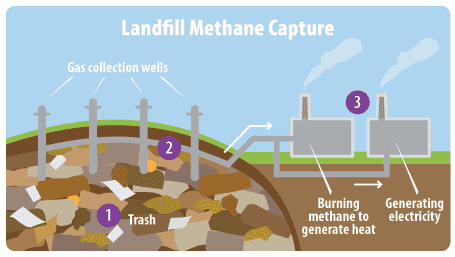Something to think about for companies developing technologies that uses methane for feedstock in chemical/polymers production.
The US Environmental Protection Agency (EPA) has issued its new final rule on steps to further reduce emissions of methane-rich gas from municipal solid waste (MSW) landfills by capturing and controlling landfill gas emissions at levels that are one-third lower than current requirements, updating 20-year-old standards for existing landfills.
Methane is a potent greenhouse gas with a global warming potential more than 25 times that of carbon dioxide. Municipal solid waste landfills receive non-hazardous waste from homes, businesses and institutions. As landfill waste decomposes, it produces a number of pollutants, including air toxics, volatile organic compounds, carbon dioxide, and methane. MSW landfills are the second-largest industrial source of methane emissions in the United States, accounting for 20% of methane emissions in 2014.
The final rules are expected to reduce methane emissions by an estimated 334,000 tons a year beginning in 2025 – equivalent to reducing 8.2 million metric tons of carbon dioxide. EPA estimates the climate benefits of the combined rules at $512 million in 2025 or more than $8 for every dollar spent to comply.
The recent EPA actions update the 1996 guidelines for existing landfills and strengthen the previously proposed rule for new landfills issued in 2014.
The EPA said its Landfill Methane Outreach Program provides landfill owners and operators a suite of tools and technical resources to facilitate development of landfill gas energy projects. Over the last 20 years, LMOP-assisted projects have reportedly reduced and avoided more than 345 million metric tons of carbon dioxide equivalent.
By the way, our Chemical Profile for the month on Tecnon OrbiChem’s Biomaterials newsletter will be all about the methanol market and bio-methanol developments.





